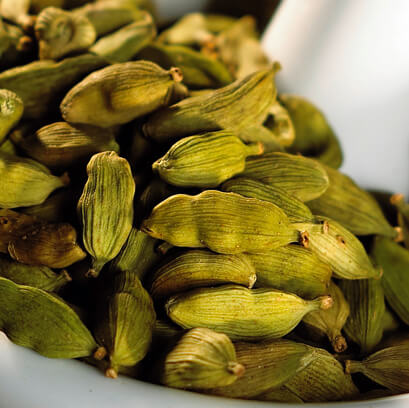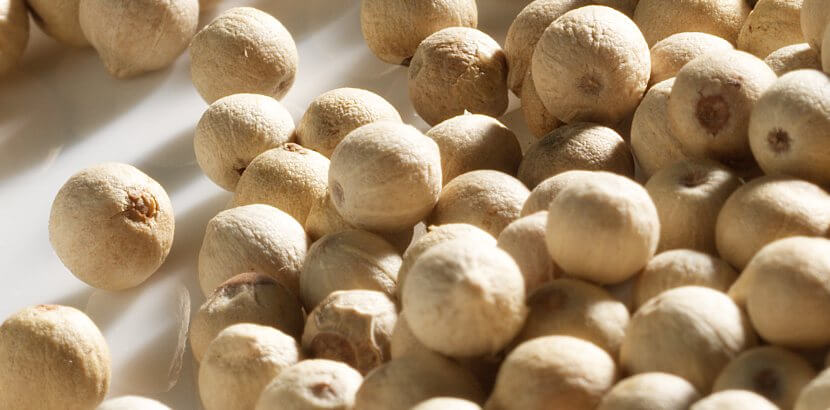Synonyms: Botanical family: origin: Classification: spice shape: flavor: odor: use: tip: Recipe suggestion: knowledge: Botany: Home & Distribution: cultivation & extraction: History: Cardamom
General information
Application
Things to know
 Botanical name:
Botanical name:
Elettaria cardamomum L.
Cardamom, Green Cardamom
Ginger plants
India, Guatemala + Indonesia
spice
fruit
aromatic, burning, spicy
camphor-like
The extremely fine and characteristic aroma and the sweetish, strongly burning taste reminiscent of eucalyptus made cardamom one of the most popular and therefore most expensive and noble spices. It is mainly used to season bread and pastries, desserts, fruit dishes and sweet marinades. Cardamom is also contained in sausage spice mixtures and is a component of many curry powders. The beverage industry uses cardamom to flavor alcoholic beverages. In Arabia, cardamom is often added to coffee as a special characteristic. Furthermore, cardamom is an indispensable component of the Swedish punch and cardamom bread, which are popular in Sweden. In East Frisia, tea is refined with a little cardamom.
The capsules should be crushed in a mortar and the capsule remains removed, or the capsules crushed between the fingers to obtain the aromatic seeds
Cardamom tea: Crush 12 cardamom capsules in a mortar and pour 1.5 l hot water over them. Add orange peel and let it stand for 10 minutes. Mix with 2-3 tablespoons of black tea and let it steep for another 3-5 minutes. Sieve and serve with sugar and milk.
botany: Besides the green cardamom there is also a black cardamom. This cardamom has a distinctly tart taste and is used less often in desserts.
The bushy-herbal plant, a relative of ginger, shoots strong stems with bright green, lancet-shaped leaves arranged like palm fronds from a thickened rootstock. They grow 2.0 to 2.5 m high. At the base of the cardamom plant, numerous pale greenish-bluish flowers with yellow edges sprout from a special side shoot, which is about 60 cm long and creeps flat over the ground. They finally ripen into greenish-grey to yellowish green, triangular, triangular seed capsules 10 to 20 mm long and 8 to 10 mm wide. In each compartment there are 4 to 8 tightly layered, irregularly concealed, greyish brown to reddish brown seeds of about 2 to 4 mm in diameter.
The tropical mountain forests (Malabar Coast, Pepper Coast) of South India and Sri Lanka (formerly: Ceylon) are the home of the cardamom plant. Even today, the provinces of Kerala, Mysore and Madras in southern India are still the main growing areas. In addition, cardamom is still found in significant stands in Malaysia, Cambodia, Tanzania and Guatemala.
Cardamom needs a warm and humid tropical climate and thrives best in the shade of partially deforested forests. One harvests the still green seed capsules shortly before maturity and dries them carefully. Harvesting is done by hand, as the fruits ripen unevenly. Cardamom is therefore sometimes the third most expensive spice after saffron and vanilla. Cardamom is mostly sold ground. If the fruit capsules are also ground, the spice must be described as "ground in the skin". However, the fruit capsules do not have their own aroma. However, the shelf life of cardamom is prolonged if the seeds that determine the aroma are left in the fruit capsule and are only freed from it when used.
This precious spice was imported from India in ancient times and is said to have been cultivated in Babylon long before Christ. It came to Central Europe around 1,200 and since then has been one of the most sought-after spices here as well.
http://kraeuterwiki.net/Kardamon







